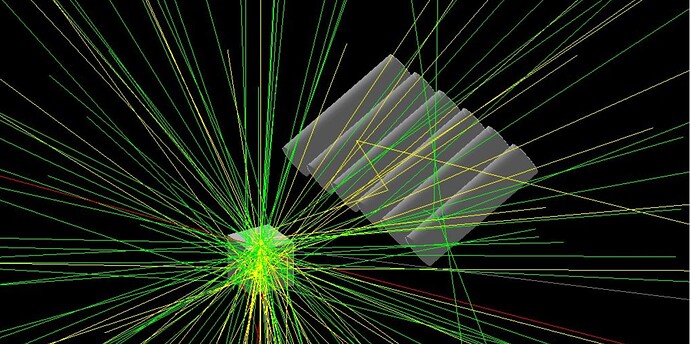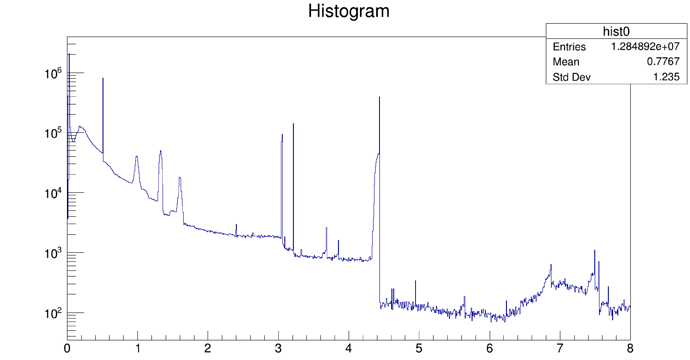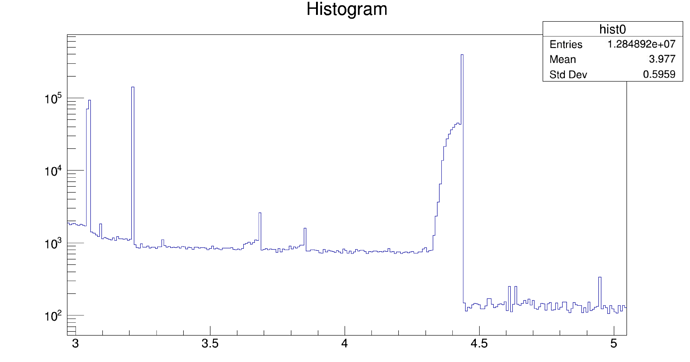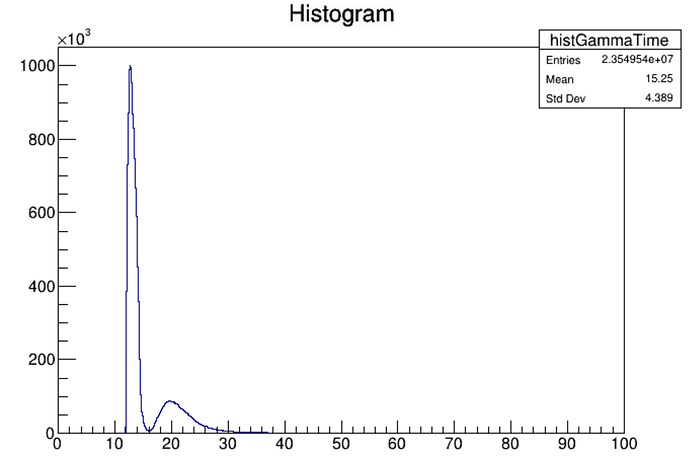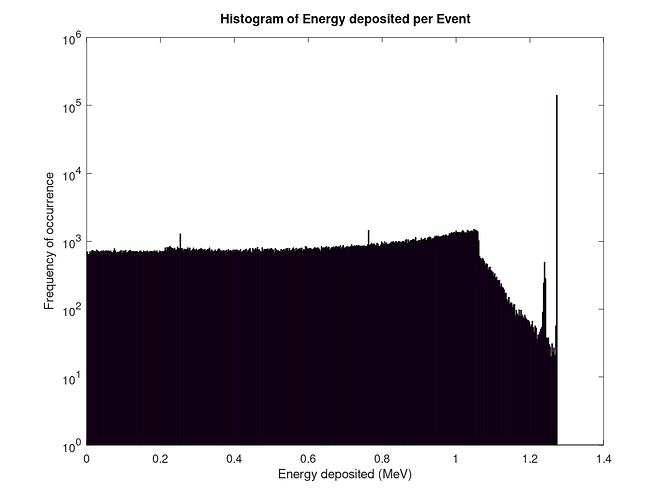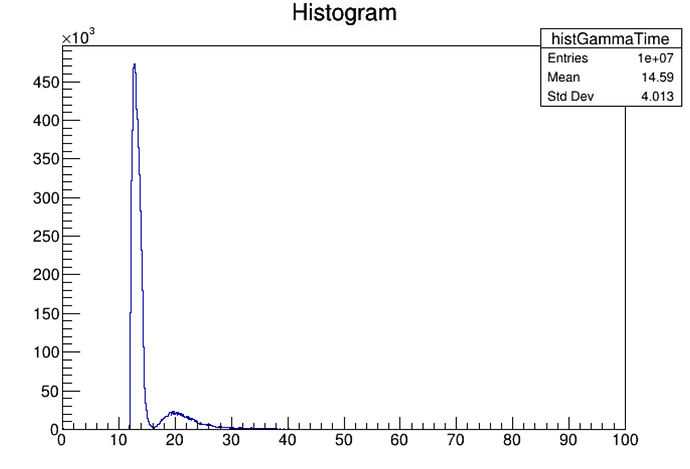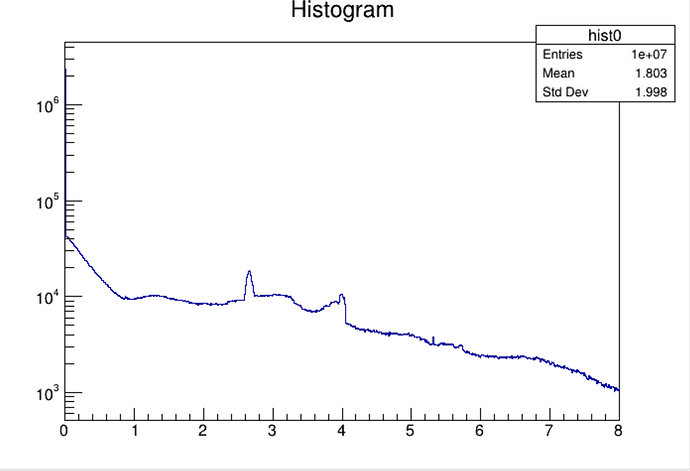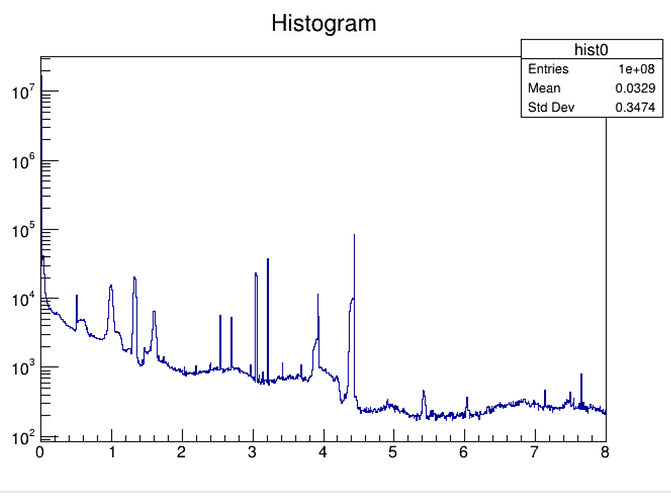Hi All,
I’m firing 14.06 MeV neutrons (from above) into a graphite block.
To the side of the block (in the image below) are some sensitive volumes to detect the gamma energy.
When I look at the literature, the histograms presented always has a first escape peak at ~3.9 MeV. This is ~511KeV from the ~4.43 MeV characteristic gamma from C12.
Any clues why I might no be seeing it? In the literature, the first escape peak obvious. I just want to ensure my simulation is correct. Histogram below.
I’ve tried adjusting the size of both graphite block and the gamma SDs.
I also tried G4_BGO and G4_SODIUM_IODIDE from the NIST manager.
I have tried QGSP_BIC_HP and QGSP_INCLXX_HP physics.
Also, note that the closest peak is ~50-60KeV lower than the 1st escape peak.
Note the log axis.
Zoomed
Any insight and help is greatly appreciated.
-MJ
